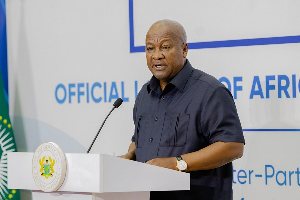Non-Traditional Exports (NTEs) earnings recorded an 11.75 percent increase, reaching US$3.94billion at the end of 2023 and accounting for 24 percent of total merchandise exports.
The increase, though significant, is still far behind the Ghana Export Promotion Authority’s (GEPA) goal of achieving US$25.3billion by 2029, according to the 2023 Annual Non-Traditional Exports Statistics Report.
“The driving force behind this expansion was the rise in exports of iron/steel circles, rods, sheets and billets,” Chief Executive Officer-GEPA Dr. Afua Asabea Asare said of the development.
“The positive trend reflects a combination of structural changes within the NTEs framework and continuous implementation of key interventions outlined under the National Export Development Strategy (NEDS) throughout the year,” she added.
According to the report, iron and steel products including circles, rods, sheets and billets surpassed cocoa paste to become the top NTE earner, generating US$447.80million.
It added that one thousand, seven hundred and two companies exported 625 non-traditional products to 156 countries; and of these companies 88 contributed 80 percent of total NTE earnings for the year under review.
Additionally, the country’s total services exports reached US$8.6billion, it said.
The report further noted that between 2019 and 2023, NTEs recorded an average annual growth rate of 7.19 percent and by 2023 accounted for 24 percent of Ghana’s total merchandise exports due to the enhanced competitiveness of Ghanaian NTEs “which is attributed to streamlined export processes, including expedited processing of export consignments and the electronic issuance of permits and certificates of origin, transmitted seamlessly to export destination authorities”.
This is a significant appreciation compared to 2022, with a growth in their percentage contribution by 20 percent it noted – adding that by end-December 2023 the total value of NTEs had reached US$3.9billion, while total merchandise exports amounted to US$16.66billion.
“Also, the percentage contribution of NTEs to total national exports has been on a rising trend over the years. It stood at 18 percent in 2019, 20 percent in 2020, 23 percent in 2021 and 20 percent in 2022.
In 2023 this figure increased further to 24 percent, highlighting the growing importance of NTEs in Ghana’s export landscape. This data underscores the increasing significance of NTEs in economy,” it said.
Meanwhile, Burkina Faso emerged as the top market destination for NTEs – accounting for 20 percent of NTEs in the year under review.
The Netherlands followed closely, absorbing 15 percent of NTEs. Other ECOWAS countries including Togo, Cote D’Ivoire and Mali made up 30 percent of the top-ten market destinations for NTEs.
The remaining market shares were distributed among North America (10 percent), India (8 percent), Italy (6 percent), Belgium (6 percent ) and the United Kingdom (6 percent).
This distribution underscores the diverse and global reach of Ghana’s NTEs, the report said.
NTE sub-sectors
The country’s NTEs sector encompasses four primary sub-sectors: agriculture, manufactures/semi-processed, industrial art & craft (handicrafts) and services. However, analysis of the report primarily focused on three of these sub-sectors, excluding services exports despite their inclusion in the report’s data.
“Evaluating the export earnings performance of these sub-sectors is essential for assessing the impact of interventions by GEPA and other government entities. The statistical data indicate a consistent increase in earnings across the various sub-sectors. Equally important is understanding the percentage contribution of each sub-sector to overall NTEs,” said the report.
The manufacturing/semi-processed sub-sector played a significant role, contributing 85.01 percent to the NTEs portfolio.
The agricultural and industrial art & craft (handicrafts) sub-sectors contributed 12.57 percent and 2.43 percent respectively.
This sustained dominance of the manufactures and semi-processed sub-sector underscored the critical need for prioritising value addition and industrialisation initiatives by government, said the report.
“Industry players’ commitment to enhancing value within the Manufacturing sector directly correlates with increased export earnings.”
To enhance exports, Dr. Asabea Asare said her outfit embarked on several initiatives including market research, export promotion campaigns and capacity building for exporters. These efforts enhanced the country’s NTEs international competitiveness and attracted investments.
Business News of Wednesday, 26 June 2024
Source: thebftonline.com













